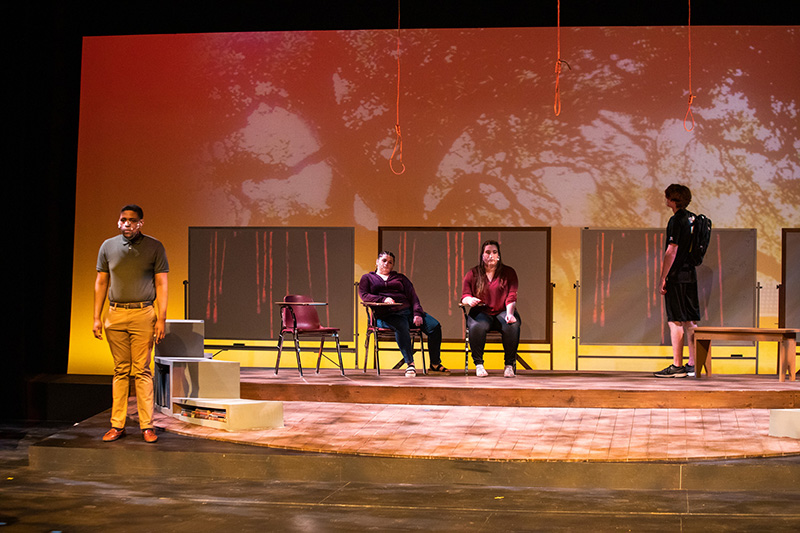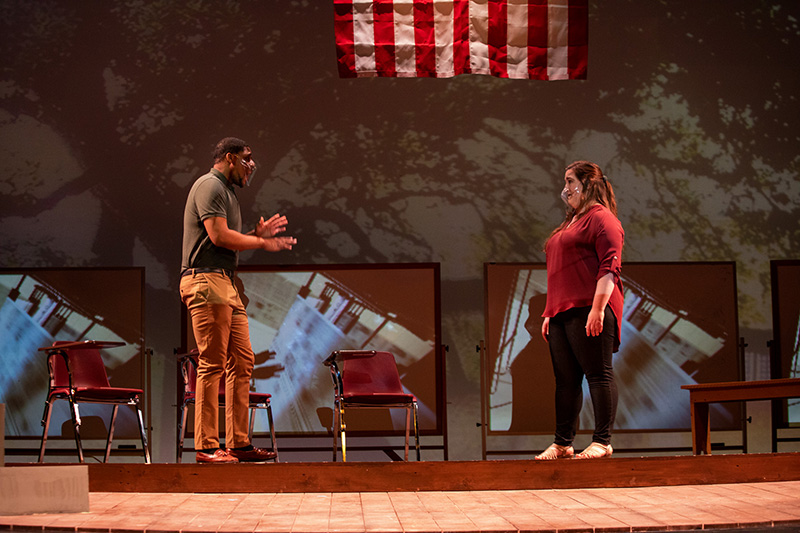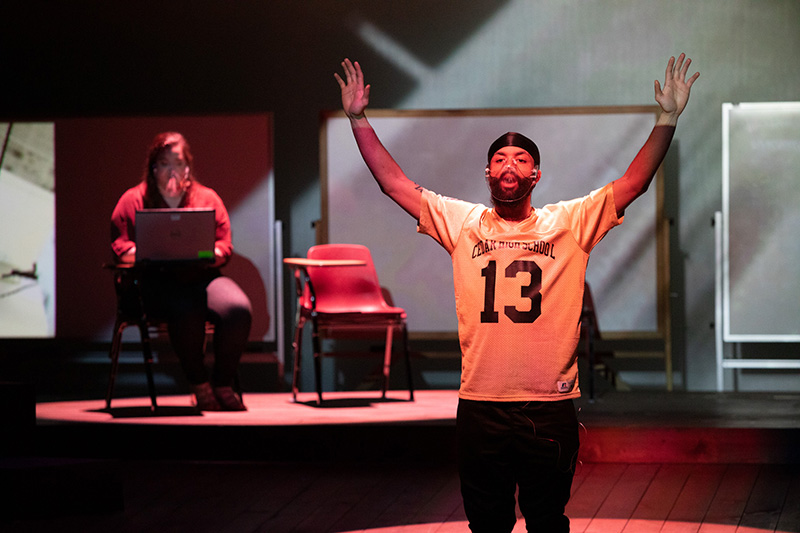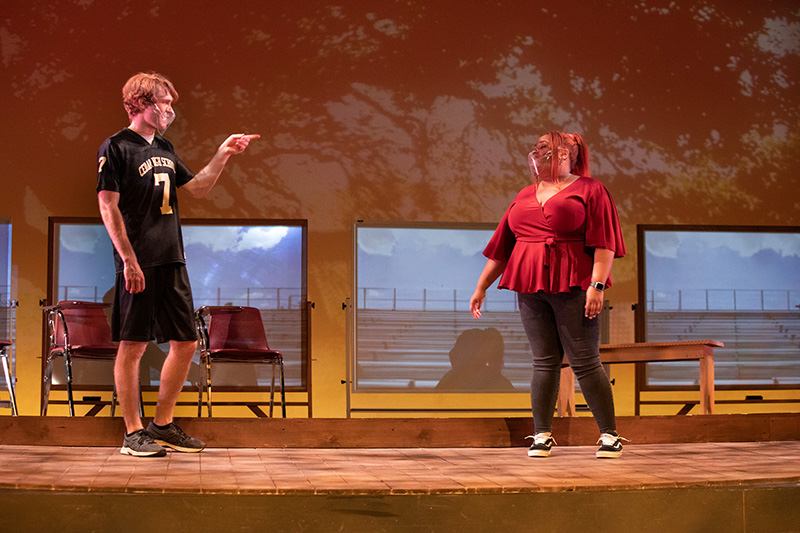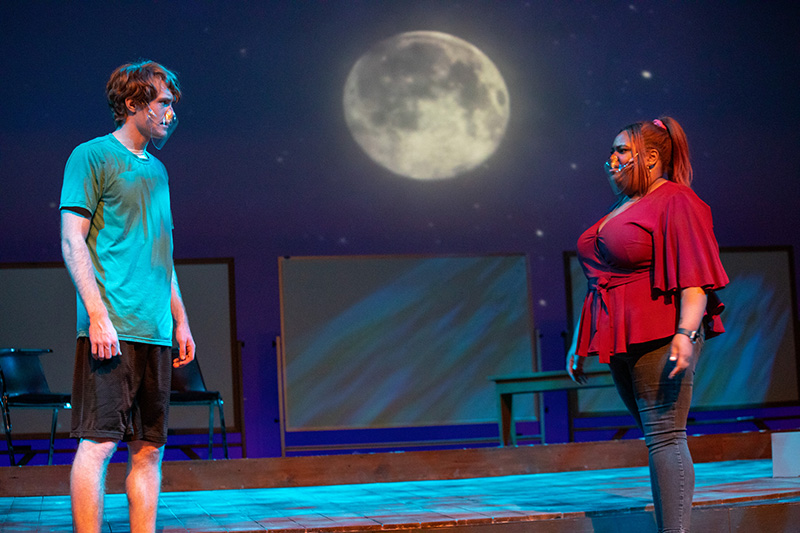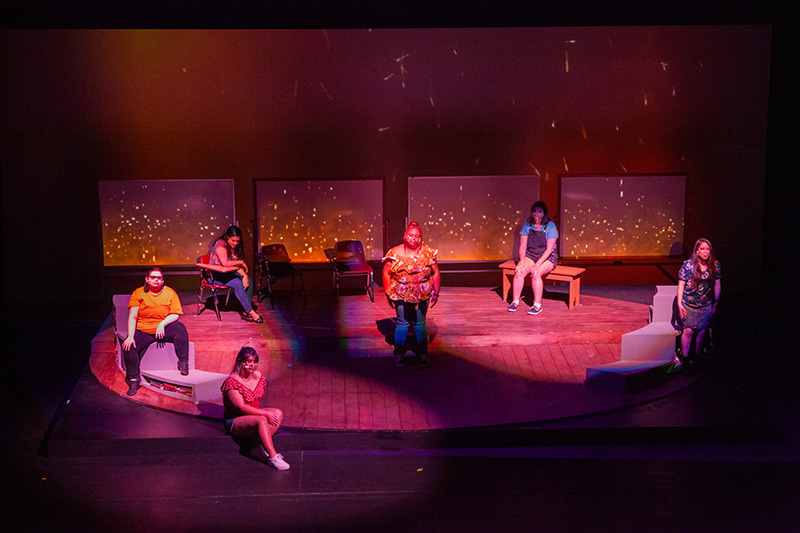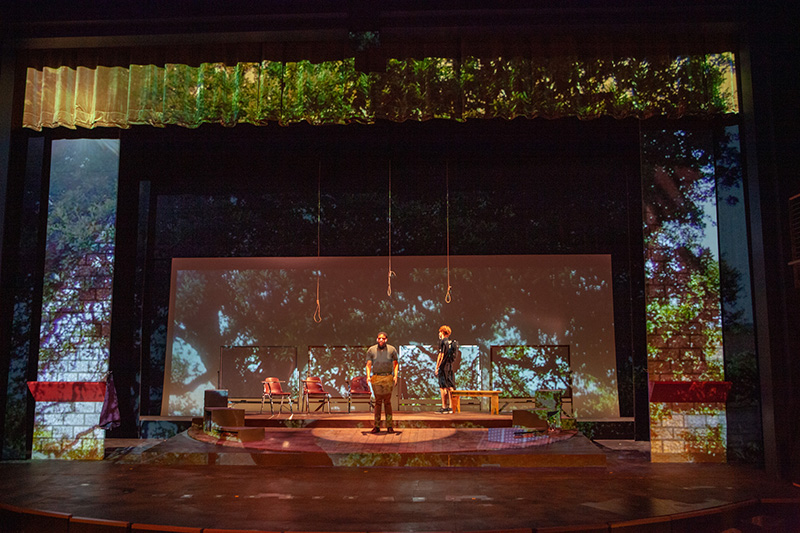- Apply
- Visit
- Request Info
- Give
Student-directed play ‘Blood at the Root’ probes Jena Six case
Written by Molly Boucher
Published on March 24, 2021
Eastern Connecticut State University's Theatre Program premiered its second production of the year, “Blood at the Root,” on March 19. The show, directed by students Austin Washington, Massiel Evans and Ed Lorsin, was supervised by Professor DeRon Williams. The virtual show will be available until March 28 at midnight.
Written by Domonique Morisseau, “Blood at the Root” first premiered at Pennsylvania State University in 2014. Based on the Jena Six case in Louisiana in 2006, the play follows Cedar High School, a socially segregated school in what its students describe as “an old town stuck in 1960.”
The play opens on the main character, Raylynn, who decides to run for class president. After her mother passes away, she has a fractured relationship with her family, specifically her brother De’Andre.
Inspired by her mother’s advice to break the rules, Raylynn decides to sit under her campus’ famous tree, named “Old Devoted.” Up until now, only White students sat under the tree. Raylynn is joined by two other students, and the next day they see three nooses hanging from Old Devoted.
After being told by students and faculty that the nooses were “just a prank,” students start to protest, with Colin, a closeted football player and friend of Raylynn saying the scene “felt like something out of the Civil Rights movement.”
Combatting issues of race and homophobia, the show follows students as they struggle with their own identities, as well as their acceptance of others. Through monologues done by the main characters, we see internal struggles that the students face, such as Asha, Raylynn’s best friend.
While she is White, Asha claims that she was ‘Black by association,’ when she lived in Atlanta, and has always identified more with the Black community. However, Raylynn finds issue in this, telling Asha she wants to be Black and act Black until it’s time to stand up against racism.
We also hear from Colin, who examines the histories of bias, saying, “It’s all got roots. The way somebody chooses not to sit with someone, got roots. . . The way someone talks, who they hang out with or who they love or hate, it’s all got roots.”
Throughout the play the audience sees Justin and Toria, editor and writer for the school newspaper. As tensions rise throughout the school, their friendship suffers, with Toria wanting to write about “real issues” while Justin wants to stick to something less controversial.
Using an alternative presentation of a gossip circle on Zoom, the productions shows students gossiping about a fight that broke out in the lunchroom. While the root cause of the fight is not revealed, conversations about homophobic and racial slurs that are occurring are examined.
The fight, which turns out to be between Colin, De’Andre and five other students, is a direct reflection of the Jena Six. The case resulted in the six young Black men being convicted. However, the play never shows the trials, as it ends with the boys being let out on bail.
Through a combination of backdrops, lights, musical and rhythmic breaks, as well as dance, “Blood at the Root” goes far beyond a standard play. “With the help of our designers, technicians and run crew we not only completed a two-day tech, the shortest tech week in Eastern’s history, but also used lights, projections and sound to tell this story,” said Director Washington, a senior theatre major.
With multiple directors and COVID-19 restrictions of social distancing and mask wearing on stage, students needed to think outside the box. “Each one [of the student directors] is talented and brought a lot to the table,” said Professor Williams.
Student director Evans compared the experience of giving directions to her peers as a moment of déjà vu. “Being the director has made me grasp a different sense of the stage when it comes to acting now that I hope will be to my advantage.”
The student directors also believe that given the current political climate, the show was an important one to produce. “It was an honor to put on a show so relevant to our time,” said Washington, “that reflects generational struggles of racism, homophobia, systemic oppression and division that we see every day.”
For registration and more information, visit https://www.easternct.edu/theatre/productions/blood-at-the-root.html.



